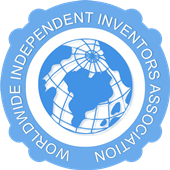- BY Admin
- POSTED IN Articles, Fără categorie
- WITH 0 COMMENTS
- PERMALINK
- STANDARD POST TYPE

The plate of the Martin ejector seat of the military aircraft, stating that the design is covered by multiple patents in Britain, South Africa, Canada and “others”. Dübendorf Museum of Military Aviation.
Patents can generally only be enforced through civil lawsuits (for example, for a U.S. patent, by an action for patent infringement in a United States federal court), although some countries (such as France and Austria) have criminal penalties for wanton infringement. Typically, the patent owner will seek monetary compensation for past infringement, and will seek an injunction prohibiting the defendant from engaging in future acts of infringement. In order to prove infringement, the patent owner must establish that the accused infringer practices all of the requirements of at least one of the claims of the patent (noting that in many jurisdictions the scope of the patent may not be limited to what is literally stated in the claims, for example due to the “doctrine of equivalents”).
An important limitation on the ability of a patent owner to successfully assert the patent in civil litigation is the accused infringer’s right to challenge the validity of that patent. Civil courts hearing patent cases can and often do declare patents not valid. The grounds on which a patent can be found not valid are set out in the relevant patent legislation and vary between countries. Often, the grounds are a subset of the requirements for patentability in the relevant country. Whilst an infringer is generally free to rely on any available ground of invalidity (such as a prior publication, for example), some countries have sanctions to prevent the same validity questions being relitigated. An example is the UK Certificate of contested validity.
The vast majority of patent rights, however, are not determined through litigation, but are resolved privately through patent licensing. Patent licensing agreements are effectively contracts in which the patent owner (the licensor) agrees to forgo their right to sue the licensee for infringement of the licensor’s patent rights, usually in return for a royalty or other compensation. It is common for companies engaged in complex technical fields to enter into dozens of license agreements associated with the production of a single product. Moreover, it is equally common for competitors in such fields to license patents to each other under cross-licensing agreements in order to share the benefits of using each other’s patented inventions.




